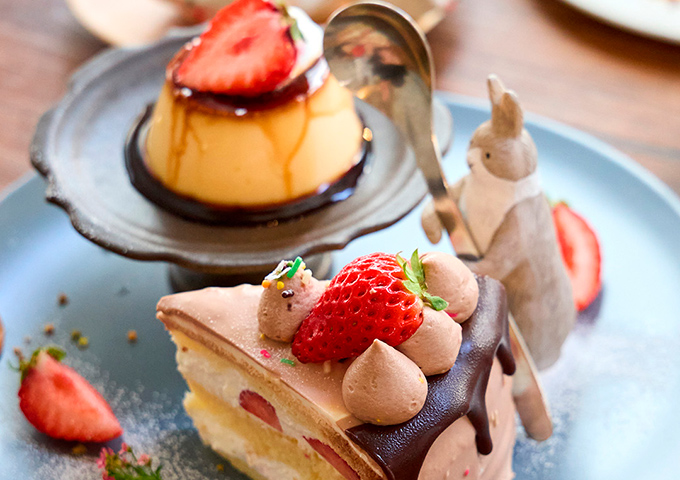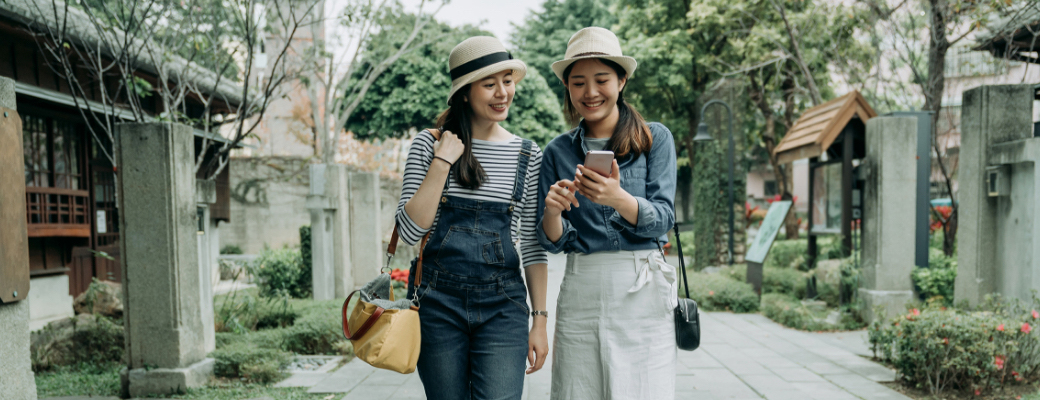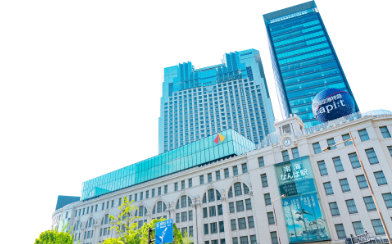
Food and Drinks
Take a relaxing break with cute sweets along the Nankai Line.

Thorough Guide – Koyasan Okunoin
Okunoin, the center of worship of Koyasan, is a tourist attraction in Wakayama Prefecture. There is the mausoleum of Kobo Daishi, and it is said to be the greatest sacred area of Koya Daishi worship.
This time, we will introduce the highlights of Okunoin, parking lots, traffic access, Goshuin, amulet information, etc.
Okunoin is a sacred place where Kobo Daishi is enrolled, and is the center of Kobo Daishi worship.There is about 2 km from Ichinohashi to the mausoleum, and there are more than 200,000 tombstones and memorial services of various Daimyos. Many towers and memorial monuments are lined up in the cedar grove.
It is one of the famous places of Koyasan, and is also called "Japan's Bodhisattva".
Here are seven highlights of the highly popular spots of Okunoin.
Ichiohashi
The official worship of Koyasan Okunoin starts from Ichinohashi. Ichinohashi is the entrance to Okunoin and is officially called Ohbashi. There are three bridges on the way to the mausoleum, and Ichinohashi, the bridge over Odogawa river that flows through Mt. Koya is the largest bridge.
It is convenient to use the "Ichinohashiguchi" bus stop or the "Okunoinguchi" bus stop.
Approach to Okunoin
On the approach to Okunoin, which stretches for about two kilometers from Ichinohashi to Okunoin, there are about 200,000 tombstones lined up in a cedar grove more than hundreds of years old. The tombstones include many historical figures that everyone knows such as the Tokugawa family, Toyotomi family, Uesugi Kenshin, Oda Nobunaga, and Ishida Mitsunari.
In addition to the tombstones along the approach to Okunoin, there are stool stones that are said that Jizo and Kobo Daishi took a rest, monuments and literary monuments, and memorial towers of companies with characteristics along the approach from the Okunoin-mae bus stop. You can enjoy it by walking the approach.
Nakanohashi
Nakanohashi is the second bridge on the approach to Okunoin. It is called Nakanohashi because it is located at the midpoint between Ichinohashi and Gobyobashi. The official name is" Chozubashi ", and it was used to cleanse people in the river flowing under the bridge and wash away their sins and injuries before worshiping during the Heian period.
By the way, the name of the river that flows under the bridge inside is "Kin no Kawa (Golden River)". "Gold" is a slang word for death, and it is said to represent the Sanzu River that separates this world from the world of death.
Gobyobashi
Gobyobashi is the third and last bridge on the approach to the Mausoleum of Kobo Daishi. When you cross Gobyobashi, you will enter the sacred area to the Mausoleum of Kobo Daishi. Therefore, it is a practice of worshiping to dress properly in front of the bridge, worship, and then cross. Step into the sacred area with a pure feeling.
This bridge used to be a wooden bridge, but now it has been replaced with a stone bridge as it was originally.
Touroudou
Cross the third bridge, Gobyobashi, and beyond there is Touroudou (the lantern hall), which is the hall of worship of the Kobo Daishi Mausoleum.
It was erected by Koyasan Shinzen Daitoku II , and in 1023, it was made almost the same size as it is today by Fujiwara no Michinaga. Lanterns with fire that never goes out with many wishes are dedicated here. One of the famous lanterns here is Kishinto, the poor woman's lantern that has a history of more than 1000 years. It is said that Kishin Shonin had cut his hair with the womans precious black hair and offered it to mourn her parents. The sight filled with lanterns is breathtaking.
In the hall, you can also apply for ancestor memorial service and sutra chanting, as well as amulets and prayers.
Kobo Daishi Gobyo
The mausoleum of Kobo Daishi, who founded Koyasan, has kept his body in the world and is still reaching out to us. Some people may feel the spirit of Kobo Daishi.
It is said to be one of the leading power spots in Japan, since it is a sacred place for Kobo Daishi worship, where many worshipers are constantly worship day and night.
* It is prohibited to take pictures and videos beyond Gobyo-bashi, so keep your camera and smartphone in your bag or pocket and worship with a solemn feeling.
Shotokuden
Shotokuden is a rare building built in the Taisho era in Koyasan, which was built as a commemorative project for the 1100th anniversary of the founding of Koyasan.
It is currently open as a teahouse and can be used for breaks during worship. Enjoy the scenery around you while enjoying self-service tea.
Doors open from 8:00 to 16:30 (summer: May-October) and from 8:30 to 16:00 (winter: November-April).
The Goshuin of Koyasan Okunoin can be earned at Okunoin Gokusho. The location of the Gokusho is near the Mizumuke Jizo lined up before entering Okunoin and before crossing the Gobyobashi.
There are two types of Goshuin available at Koyasan Okunoin. The rare one is "Daikokuten" that is awarded only at the "Koshi Day" (Koshi / Kinone) ", and the other is "Kobo Daishi" that can be enjoyed all year round. Koshi Day is Daikoku-sama's fair, and there are only 6 days a year. If you would like to receive the Goshuin of "Daikokuten", please visit on Koshi Day.
If you have visited Koyasan Okunoin, you would like to wear an Omamori (amulets) or decorate it at home to benefit from it.
At Koyasan Okunoin, you can ask for Omamori at Gokusho, where you can get the Goshuin, and Touroudou. There are a wide variety of Omamori, including the oldest amulet, the Migawari Omamori, and the Kyousei Omamori made of cypress that protected the mausoleum of Kobo Daishi, as well as academics and traffic safety.
There are various types of Omamori, so it will be fun to choose the one that suits you. Kobo Daishi's Omamori is a standard and popular item.
The main way to get to Okunoin is to take the Nankai Rinkan Bus from Koyasan Station on the Nankai-Koya Line. Traveling by car is expected to be crowded, so try to move early.
Access
1. Take the Nankai Rinkan Bus Okunoin-mae Bus and get off at" Okunoinguchi " or " Ichinohashiguchi ", walk for about 40 minutes to the mausoleum.
2.Take the Nankai Rinkan Bus Okunoin-mae Bus and get off at "Okunoinmae", walk for about 30 minutes to the mausoleum.
Parking Info
・ Ichinohashi Parking Lot: 8 cars (charged)
・ Nakanohashi Parking Lot: 186 passenger cars (free)
・ Parking lot along prefectural road 53: 51 cars (free)
・ Location: 132 Koyasan, Koya-cho, Ito-gun, Wakayama Prefecture
・ Admission fee: Free
・ Gokusho reception hours: (May-October) 8: 00-17: 00, (November-April) 8: 30-16: 30
・ Lantern Hall Reception hours: 8: 30-17: 00 throughout the year
・ You can visit the Mausoleum of Kobo Daishi at any time.
・ URL: http://www.koyasan.or.jp/
If you officially worship from Ichinohashi to the Mausoleum, you will be able to receive the sacred power of the historic Koyasan Okunoin. There are plenty of attractions such as the Okunoin approach and the Touroudou lantern hall, so please take a leisurely stroll while enjoying the scenery of the four seasons.

